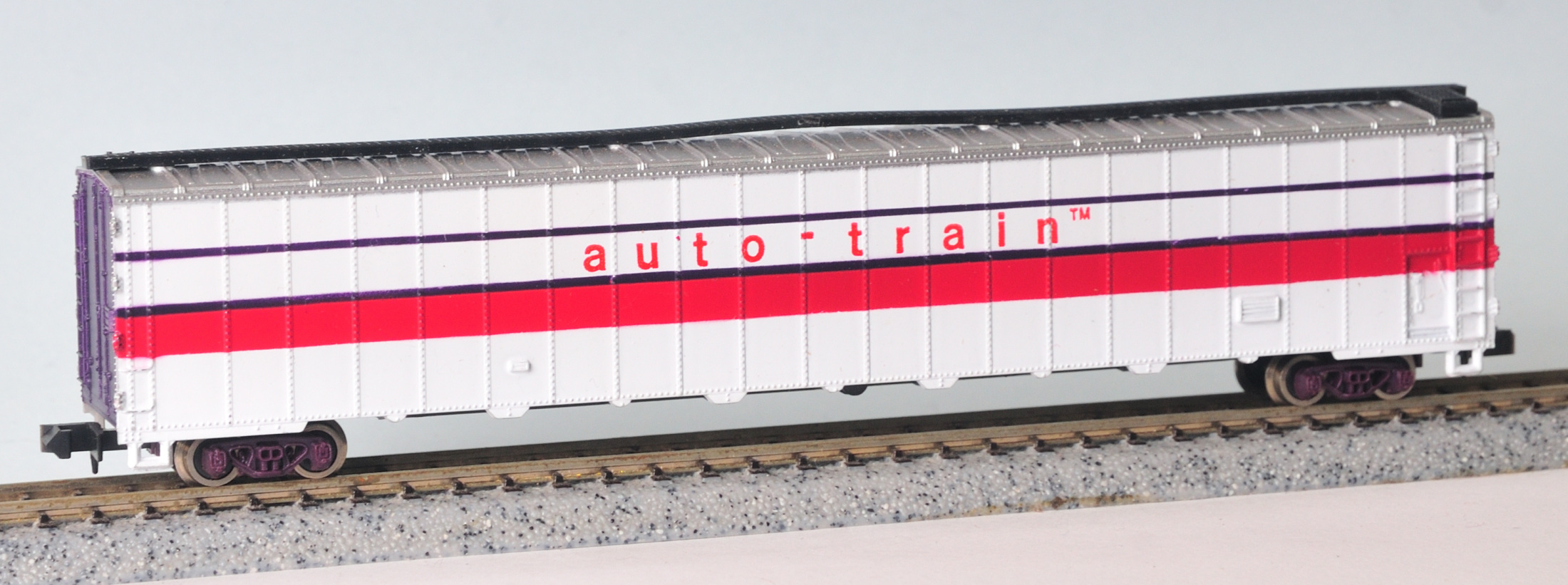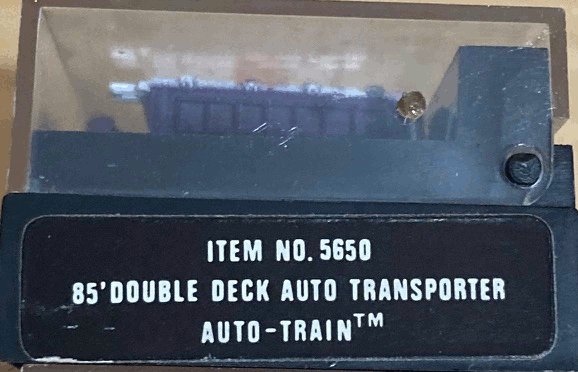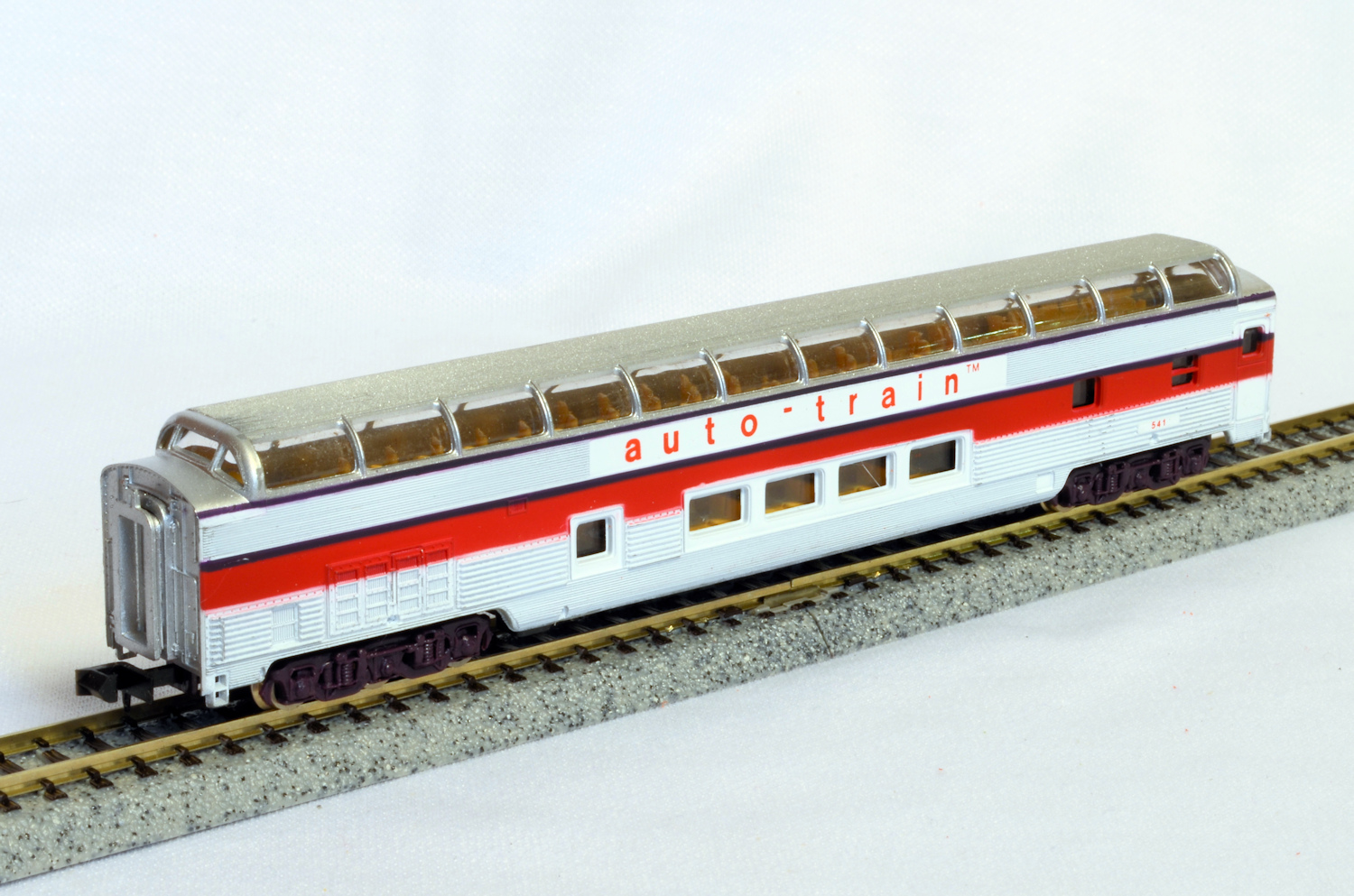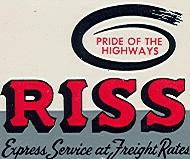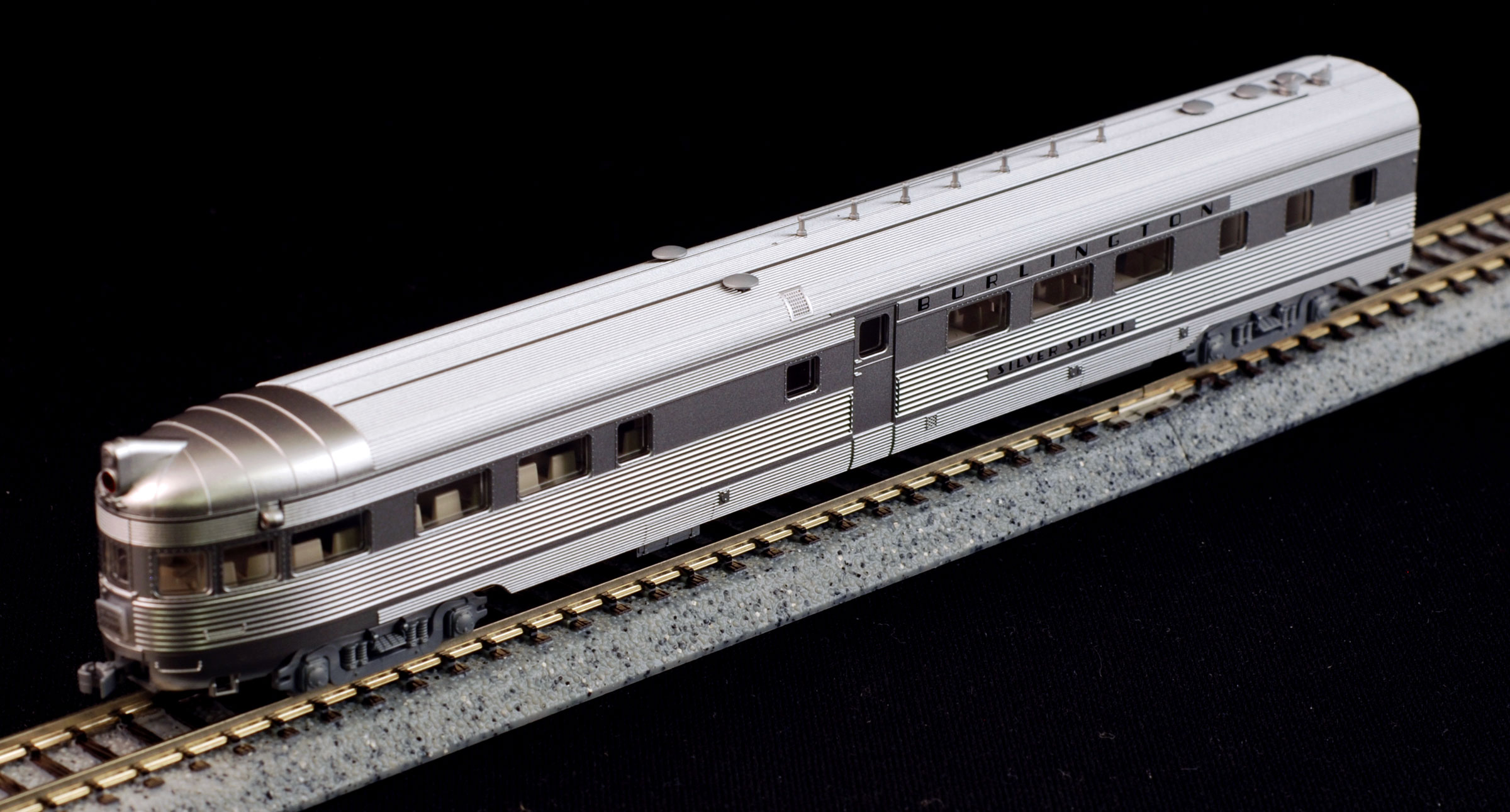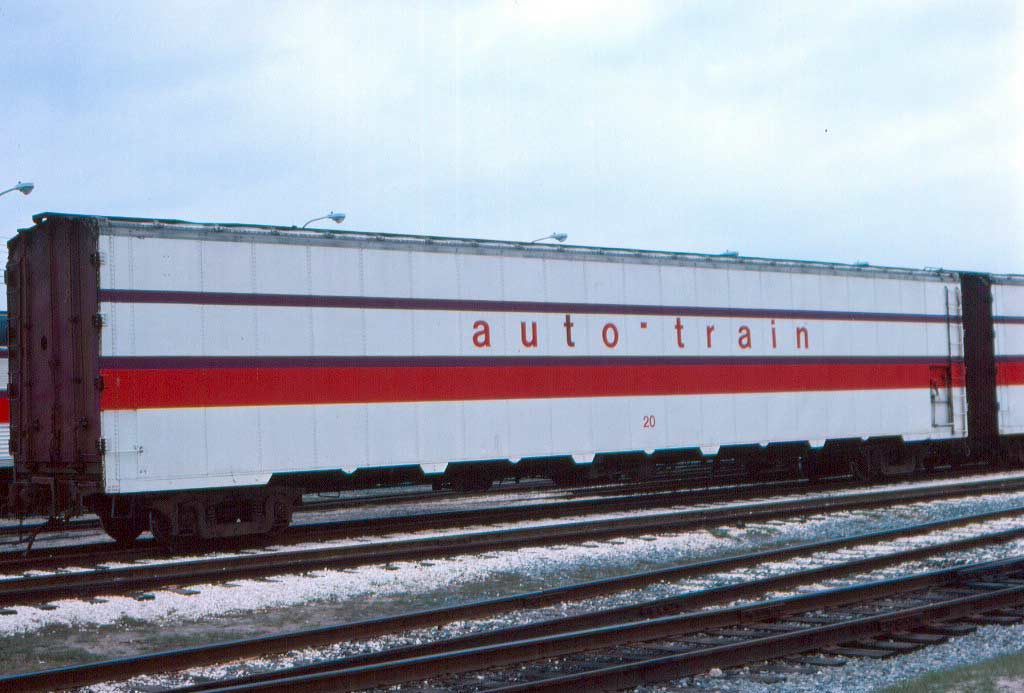Prototype History: The Autorack (or "Auto Carrier") is a piece of railroad rolling stock built for a specific purpose - to transport cars. Commonly used to transport cars from the manufacturer to larger automotive distributors (before they're loaded onto the semis that are commonly seen on highways), they are also used on services such as Amtrak's Auto Train - a special train which operates between Lorton, VA and Sanford, FL in which passengers can load their cars aboard any one of the 20-30 trailing autorack cars and enjoy a luxurious ride down the United States' east coast, the end of which they can take their car with them for the continuation of their journey.
The double-deck autoracks used by the original Auto Train were acquired from Canadian National in 1971. The autoracks were designed and built in the 1950s by CN. They were the first of their kind. The CN bi-level autorack cars had end-doors. They were huge by the standards of the time; each 75-footer (23.86 m) could carry 8 vehicles. Ramps at the terminals loaded cars through the end doors. Most of these carriers were later sold to Amtrak for use in their auto train when the auto-train corporation went bankrupt in 1981.
The double-deck autoracks used by the original Auto Train were acquired from Canadian National in 1971. The autoracks were designed and built in the 1950s by CN. They were the first of their kind. The CN bi-level autorack cars had end-doors. They were huge by the standards of the time; each 75-footer (23.86 m) could carry 8 vehicles. Ramps at the terminals loaded cars through the end doors. Most of these carriers were later sold to Amtrak for use in their auto train when the auto-train corporation went bankrupt in 1981.
Road Name History:  Auto-Train was incorporated in 1969 and began operations in late 1971. Initially, they hauled passengers and their automobiles from Lorton in Northern Virginia to Sanford, Florida which is not far from Orlando. RF&P and Seaboard Coast Line were the host railroads. The passenger car fleet was purchased secondhand from various roads and the autoracks were an early design from Canadian National. GE U36B's were used for road power (built to Seaboard Coast Line specifications.) Lorton was the northern terminus because the autoracks would not fit the clearances in Washington D.C. and points north. Auto-Train featured daily departures from both ends. The trains were popular and usually exceeded 30 cars evenly split between autoracks and passenger cars. In 1974, Auto-Train expanded with trains running between Louisville and Sanford. This second route was a failure and this combined with a couple of expensive wrecks sent Auto-Train into a downward spiral. In 1980, they declared bankruptcy and the following April, the last Auto-Train ran. Amtrak resurrected the idea in 1983 with a tri-weekly service on the Lorton - Sanford route.
Auto-Train was incorporated in 1969 and began operations in late 1971. Initially, they hauled passengers and their automobiles from Lorton in Northern Virginia to Sanford, Florida which is not far from Orlando. RF&P and Seaboard Coast Line were the host railroads. The passenger car fleet was purchased secondhand from various roads and the autoracks were an early design from Canadian National. GE U36B's were used for road power (built to Seaboard Coast Line specifications.) Lorton was the northern terminus because the autoracks would not fit the clearances in Washington D.C. and points north. Auto-Train featured daily departures from both ends. The trains were popular and usually exceeded 30 cars evenly split between autoracks and passenger cars. In 1974, Auto-Train expanded with trains running between Louisville and Sanford. This second route was a failure and this combined with a couple of expensive wrecks sent Auto-Train into a downward spiral. In 1980, they declared bankruptcy and the following April, the last Auto-Train ran. Amtrak resurrected the idea in 1983 with a tri-weekly service on the Lorton - Sanford route.

Brand/Importer Information: Bachmann Industries (Bachmann Brothers, Inc.) is a Bermuda registered Chinese owned company, globally headquartered in Hong Kong; specializing in model railroading.
Founded in Philadelphia, Pennsylvania, the home of its North American headquarters, Bachmann is today part of the Kader group, who model products are made at a Chinese Government joint-venture plant in Dongguan, China. Bachmann's brand is the largest seller, in terms of volume, of model trains in the world. Bachmann primarily specializes in entry level train sets, and premium offerings in many scales. The Spectrum line is the high quality, model railroad product line, offered in N, HO, Large Scale, On30, and Williams O gauge all aimed for the hobbyist market. Bachmann is the producer of the famous railroad village product line known as "Plasticville." The turnover for Bachmann model trains for the year ended 31 December 2006 was approximately $46.87 million, a slight increase of 3.36% as compared to 2005.
Founded in Philadelphia, Pennsylvania, the home of its North American headquarters, Bachmann is today part of the Kader group, who model products are made at a Chinese Government joint-venture plant in Dongguan, China. Bachmann's brand is the largest seller, in terms of volume, of model trains in the world. Bachmann primarily specializes in entry level train sets, and premium offerings in many scales. The Spectrum line is the high quality, model railroad product line, offered in N, HO, Large Scale, On30, and Williams O gauge all aimed for the hobbyist market. Bachmann is the producer of the famous railroad village product line known as "Plasticville." The turnover for Bachmann model trains for the year ended 31 December 2006 was approximately $46.87 million, a slight increase of 3.36% as compared to 2005.
Item created by: gdm on 2018-02-19 09:26:16. Last edited by gdm on 2023-09-29 06:59:35
If you see errors or missing data in this entry, please feel free to log in and edit it. Anyone with a Gmail account can log in instantly.
If you see errors or missing data in this entry, please feel free to log in and edit it. Anyone with a Gmail account can log in instantly.


